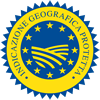Description
Carciofo di Paestum PGI is a fresh artichoke deriving from the bud (flower head) of plants belonging to the species Cynara cardunculus L., subspecies Scolymus, Carciofo Romanesco variety, commonly known as Tondo di Paestum, named after the local ecotype from which it derives.
Production Area
The production area of Carciofo di Paestum PGI is within the municipalities of Agropoli, Albanella, Altavilla Silentina, Battipaglia, Bellizzi, Campagna, Capaccio, Cicerale, Eboli, Giungano, Montecorvino Pugliano, Ogliastro Cilento, Pontecagano Faiano and Serre, in the Province of Salerno, in the Campania region.
Production Method
Carciofo di Paestum PGI is the result of a precise and arduous cultivation process, which the farmers in Piana del Sele have perfected over the decades. The artichoke beds can be cultivated for up to and no longer than three years. Transplanting can be done either with young plants with the root ball from the farmer’s own nursery or specialised nurseries, or with “carducci” (basal shoots) taken directly from the mother plants. In the first case, planting takes place between July 15th and August 31st, while in the second, between September 1st and 30th. The artichokes are harvested between February 1st and May 20th, with an oblique cut on the stalk at a determined height from the ground. The artichokes are then selected and washed using traditional local techniques, and transported to suitable establishments for storing; this must not exceed 72 hours and the environment must be temperature controlled.
Appearance and Flavour
The flower head of Carciofo di Paestum PGI has a spheroidal shape and is compact, with a hole in the top; it is green with pinkish-violet hues and doesn’t have thorns. It has an average head size (no more than four per stalk per kilogram of the vegetable); the peduncle is less than 10 cm; the heart is fleshy, with a particularly flavoursome, yet delicate flavour.
History
The origins of artichoke cultivation date back to Bourbon times, with the statistical office already registering its presence in the Capaccio and Evoli areas (today’s Eboli) in 1811. However, cultivation only began to spread with the extensive land reclamation and agricultural transformation brought about by the agrarian reform in 1929-30, which was thanks to the efforts of several Neapolitan farmers who created the first specialised artichoke cultivations in the areas adjacent to the famous Paestum Temples. In 1845, Achille Bruni described the diffusion, value and potential of artichoke cultivation on the Sele Plain in detail in his Breve ragguaglio dell'agricoltura e pastorizia del Regno di Napoli, with particular reference to the Castellammare artichoke being the cultivated variety, later mentioned by other writers as a synonym of the artichoke’s new name Tondo di Paestum.
Gastronomy
To maintain its organoleptic properties, Carciofo di Paestum PGI should be kept in a cool, dry place; it is also best to remove the harder external leaves and stalk and put it in a hermetically sealed container, where it can be kept for around five to six days. It can be consumed fresh, grilled, boiled, or deep fried in batter. Carciofo di Paestum PGI is a basic ingredient in the Mediterranean diet; it has played an important role in the gastronomic and rural culture of southern Italy, particularly in the Campania region, for time immemorial.
Marketing
The product is marketed as Carciofo di Paestum PGI. It is sold in rigid containers with a minimum of 2 and a maximum of 24 heads. It is available on the market from February 1st to the end of May.
Distinctive Features
The cool and rainy climate over the long production period (February-May), which is typical of the area, gives Carciofo di Paestum PGI the characteristic tenderness and delicacy for which it is so highly appreciated.























